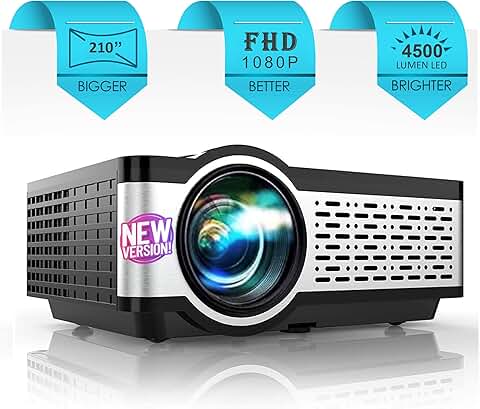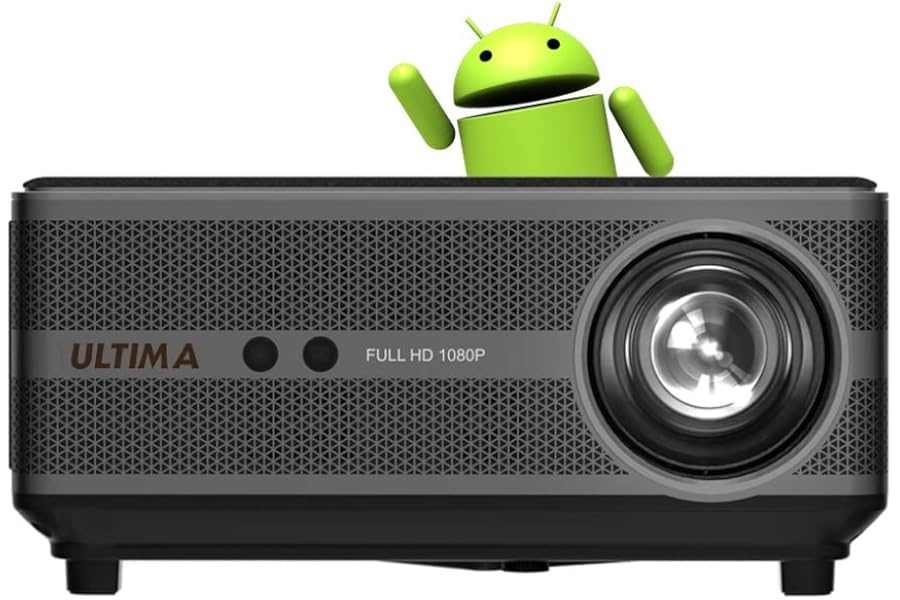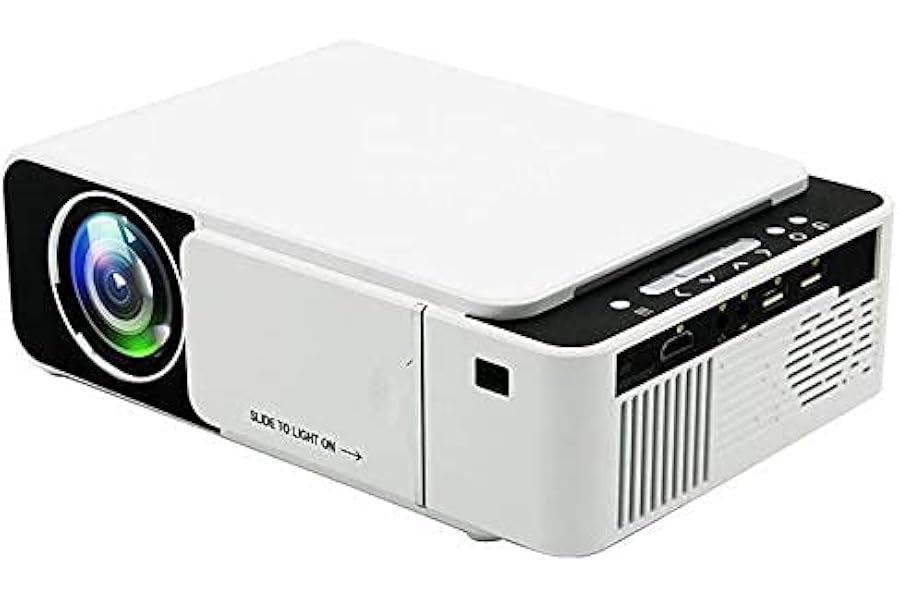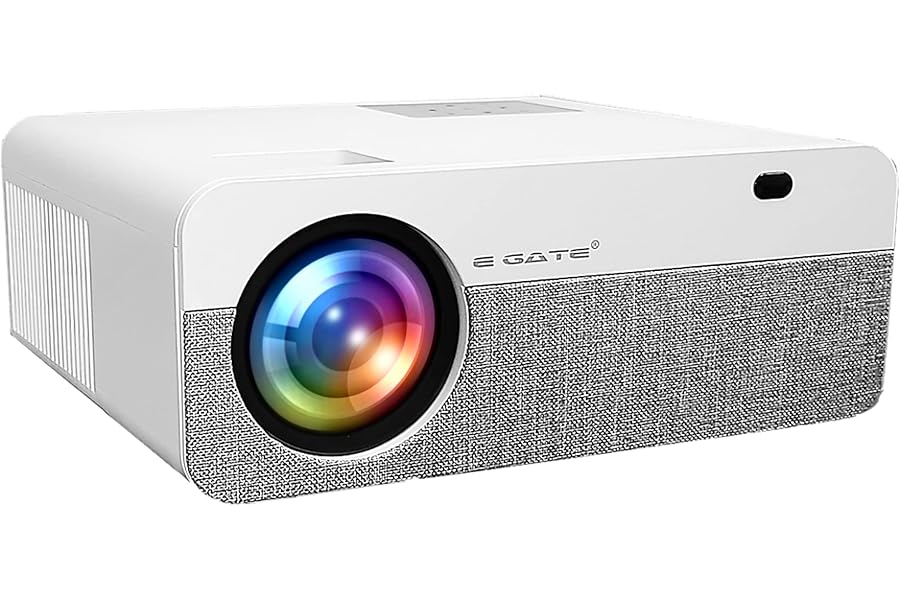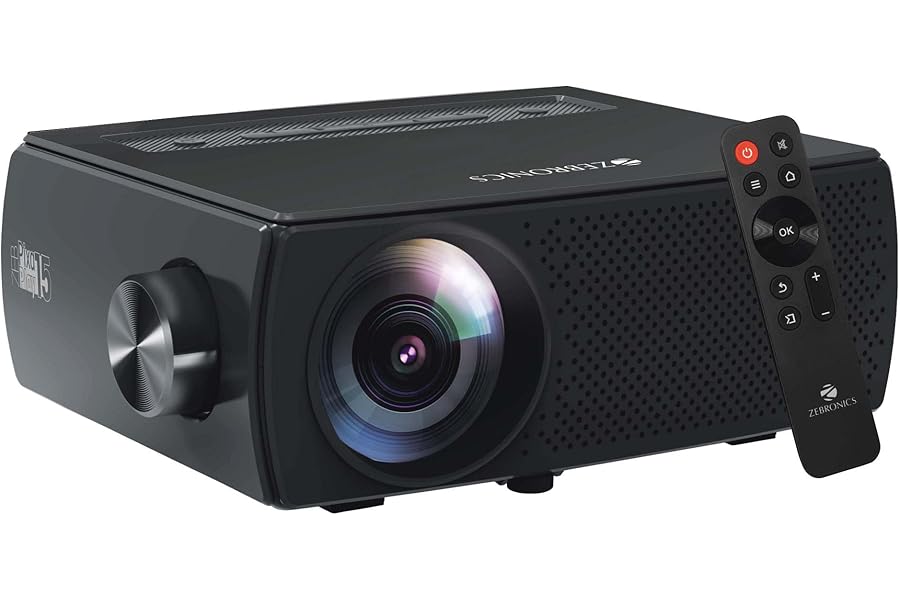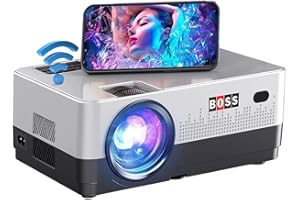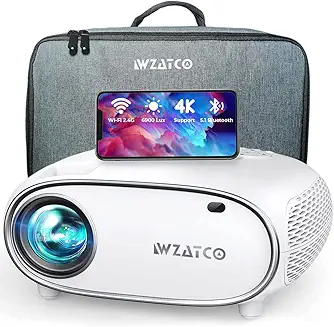2023 Best Projectors in India – Top List Ranked & Reviewed
Last Updated March 23, 2025
Our Top 3 Picks (Quick List)
Welcome to our guide on the best projectors to buy in India. Whether for home theaters, presentations, or educational purposes, choosing the right projector is crucial for an immersive visual experience. In this article, we’ll explore top projectors in the Indian market, considering factors like image quality, brightness, connectivity, and additional features to find the perfect projector for your specific needs and preferences.
Top 10 Projectors List in March 2025 (For Home Cinema & General Entertainment)
Your Guide to Purchasing the Best Projectors
Projectors are most commonly used in offices, classrooms, concerts, movie theaters, and so on. It is best to have a proper understanding of the different kinds of projectors so that one can understand which type suits them the best.
Home theater projectors are most commonly used in homes for movies and sports viewing purposes. The projectors have high contrast and produce theater-like images.
The office projectors are perfect for use in the classroom and business. They are lightweight and often portable and are brighter than home projectors. If the projector is portable, you will have to compromise on the image and brightness.
Portable projectors are lightweight and compact and are helpful for presentations and screenings. They can be easily fitted in a briefcase and carried without much problem.
Digital Light Processing Projectors give sharp images and help you achieve theater-like image quality. This happens when the video is shown from DVD, Blu-ray, and HDTV sources.
Liquid Crystal Display projectors can work well in dimly lit rooms as well as brightly lit rooms. They are ideal for showing 3D graphics, videos, and other data presentations.
How to select the best projector?
Projectors have improved a lot since their inception when they were used as overhead projectors in schools mostly. Now they have gained prominence and are used not only in educational institutions but also in offices. This guide will help you pick the best projector for your needs.
Projector Usage
Determining why you need the projector will go a long way in easing the shopping process. The projection for your home will be different from the projection in the classroom or office settings. The home theater projector, which gives great clarity for watching movies or other videos, will not be ideal for use in office settings. Office projectors need to have qualities that allow them to be used in dimly lit rooms as well as bright rooms. Hence, before making the purchase, it is important to determine why you need the projector.
Lumen output
You need to check this specification to understand the brightness of the projector. Without proper brightness, the images or the content displayed will not be easy to read by the audience. The more lumens a projector has, the brighter it will be. For example, in a dark room, 1000 to 1200 lumens will be enough to provide good brightness. However, a room that has a window or ambient light will need 2000 lumens or more for better display of the content.
Contrast ratio
The contrast ratio refers to the difference between the lightest white and darkest black on the screen. If the first number is high in the ratio, the difference will be more. It has been found that light in the room is the biggest enemy for a good contrast ratio. A small amount of light in the room can cause havoc to the contrast ratio of the projector. Whether your projector has a contrast ratio of 10000:1 or 1000:1, you will not be able to differentiate once there is light in the room. Having a bright projector can, to a great extent, minimize the problem of ambient light in the room. If you will be projecting in a room where there will be ambient light, look for a projector with high lumen output.
Aspect ratio
This ratio refers to the width to height ratio required for the screen size. The first number represents the width, while the second refers to the height. Different aspect ratios have different meanings and usage too. Depending on the aspect ratio, you will find that a particular projector is helpful in one situation, while another projector is helpful in another situation. The 1:1 aspect ratio gives a square screen and is ideal for educational institutions. The 4:3 aspect ratio is similar to that of non-high definition television. The
16:10 aspect ratio is one of the most common ones for wide projectors. The 16:9 aspect ratio is the format for high-definition television and is widely used for the latest television sets. 2.35:1 is the aspect ratio that is the most popular format for home entertainment purposes. It can be used to view cinema at home.
Throw ratio
How far does the projector have to stay from the screen? This is another important point to keep in mind while purchasing the projector. The projectors are categorized based on their throw distance. There are long and short throw projectors. The throw distance refers to the distance between the screen and the projector. The long and short throw is determined based on the distance between the screen and the projector. The closer you move the long-throw projector to a screen, the smaller the size of the image becomes. A short-throw projector, on the other hand, can show the same image using less distance. Short-throw projectors are perfect for small areas, while long-throw projectors are perfect for auditoriums and larger areas.
Image resolution
When considering the picture quality of the projector, this is one factor to consider. Check the number of pixels a device can project along with the aspect ratio. Projectors with a resolution of 1024×768 pixels resolution along with a 4:3 aspect ratio give a square-shaped image. This is ideal for office settings where PowerPoint presentations are often shown.
Projectors with 1280×800 pixels resolution and a 16:10 aspect ratio help show different kinds of spreadsheets in office environments.
HD projectors with 1920 x 1080 pixels resolution along with 16:9 aspect ratios are best for home viewing purposes. They can also be used in conference rooms and for photography purposes where you need clarity.
4K projectors with 4096 x 2160 pixels resolution have 16:9 aspect ratios. This is helpful as it improves the HD resolution and projects lifelike color and clear images.
Keystone Correction
Keystone correction is a feature that allows you to adjust the distortion of the projected image caused by the angle of the projector. It is particularly useful when the projector cannot be placed directly in front of the screen due to space constraints. Keystone correction helps align the image properly, ensuring that it appears rectangular and not distorted. Look for projectors with both vertical and horizontal keystone correction capabilities for maximum flexibility in placement.
Connectivity Options
Consider the connectivity options provided by the projector. HDMI (High-Definition Multimedia Interface) is a common and versatile connection that supports high-quality audio and video transmission. VGA (Video Graphics Array) is another commonly used connection for video output. USB ports allow for easy connection of external devices such as flash drives or laptops. Additionally, some projectors offer wireless connectivity options, such as Wi-Fi or Bluetooth, allowing you to stream content wirelessly from compatible devices like smartphones or laptops.
Built-in Speakers
While projectors typically prioritize visual display, having built-in speakers can be convenient for smaller presentations, casual movie nights, or situations where external speakers are not readily available. Check the speaker quality and wattage to ensure it meets your audio needs. If you require a higher-quality audio experience, consider connecting external speakers or utilizing the audio output ports on the projector.
Zoom and Focus Adjustment
Manual zoom and focus adjustment allow you to adjust the size and clarity of the projected image without moving the projector. This flexibility is useful in situations where you need to adjust the projection size to fit different screen sizes or distances. Look for projectors with a zoom lens that offers both optical and digital zoom capabilities. Additionally, a focus adjustment ring or control will allow you to achieve a sharp and clear image.
Lamp Life
Lamp life refers to the estimated operating hours of the projector’s lamp before it needs to be replaced. Longer lamp life is desirable as it reduces the frequency of lamp replacements, which can be costly and inconvenient. Lamp life can vary significantly between different projectors, ranging from a few thousand hours to several tens of thousands of hours. Consider your usage patterns and calculate how long the lamp is likely to last based on your projected usage to make an informed decision.
Noise Level
Projectors generate some level of noise due to the cooling fans and internal components. In quiet environments such as home theaters or small meeting rooms, a quieter projector is desirable to avoid distractions and ensure an immersive experience. Look for projectors with low noise ratings (expressed in decibels, or dB) or those that have a whisper mode or eco mode, which reduces fan speed and noise output. Reading reviews or checking specifications for noise levels can help you find a projector that suits your noise sensitivity requirements.
3D Capability
If you enjoy watching 3D content, consider whether the projector supports 3D functionality. Some projectors are specifically designed to display 3D movies, games, or other content. To fully experience 3D, you will need compatible 3D glasses and content that is specifically formatted for 3D projection. Check the projector’s compatibility with different 3D formats (such as DLP Link or RF) and ensure that the necessary accessories are available.
Projector accessories
Replacement lamps, mounts, screens, and other important accessories are needed for your projector. After you select the kind of projector you need, make sure you compose a list of the accessories you need for the projector. Many companies sell projector accessories. You can either buy the accessories from the same company from whom you have purchased the projector, or you can also buy them from a different company that offers you great prices on the accessories.
Wrap Up
After you have narrowed down all the options, you can easily pick and choose the projector that will suit your needs perfectly. This will enable you to make informed buying decisions, and you will not be swayed by any salesperson.

